
by: SEO Strategist
Ashot Nanayan
Ashot Nanayan is the CEO and Founder of DWI and a seasoned SEO strategist. With a proven track record of...
All Articles by Ashot Nanayan
July 31, 2025
7 min. read
White hat link-building is a process of earning backlinks by following Google’s guidelines and focusing on value rather than manipulation. It’s about getting other websites to link to you because your content is helpful, relevant, or worth referencing, not because you paid for it or gamed the system.
I’ll bet everybody knows the definition of white-hat link-building, but how many of us follow Google’s guidelines is a big question. Most website owners or clients are unaware of the basics of link-building, and that’s one of the top reasons agencies, freelancers, and consultants take full advantage. As a result, the market is flooded with backlink marketplaces, free guest posting sites, cheap links, and all sorts of black-hat tactics.
In this guide, I’m gonna share tips, strategies, and techniques around white-hat link-building, plus some pro tips to help you avoid common mistakes and build results that last. If you’re also holding your breath waiting to fill your head with all this, then I think there’s no need to waste any more time.
Google has a very clear stance on how links should be earned. They want us to focus on white hat techniques; things like creating helpful content, building real relationships, getting featured in industry publications, and so on.
All this stuff sounds good on paper. However, as someone who’s been in this space for years, I can tell you that while those guidelines make sense, they don’t always match the reality for newer websites. I mean, you can write amazing content, but if you’re buried on page five, no one’s going to see it, let alone link to it. So when Google says “great content attracts links,” sure, that’s true, but only when people can find it.
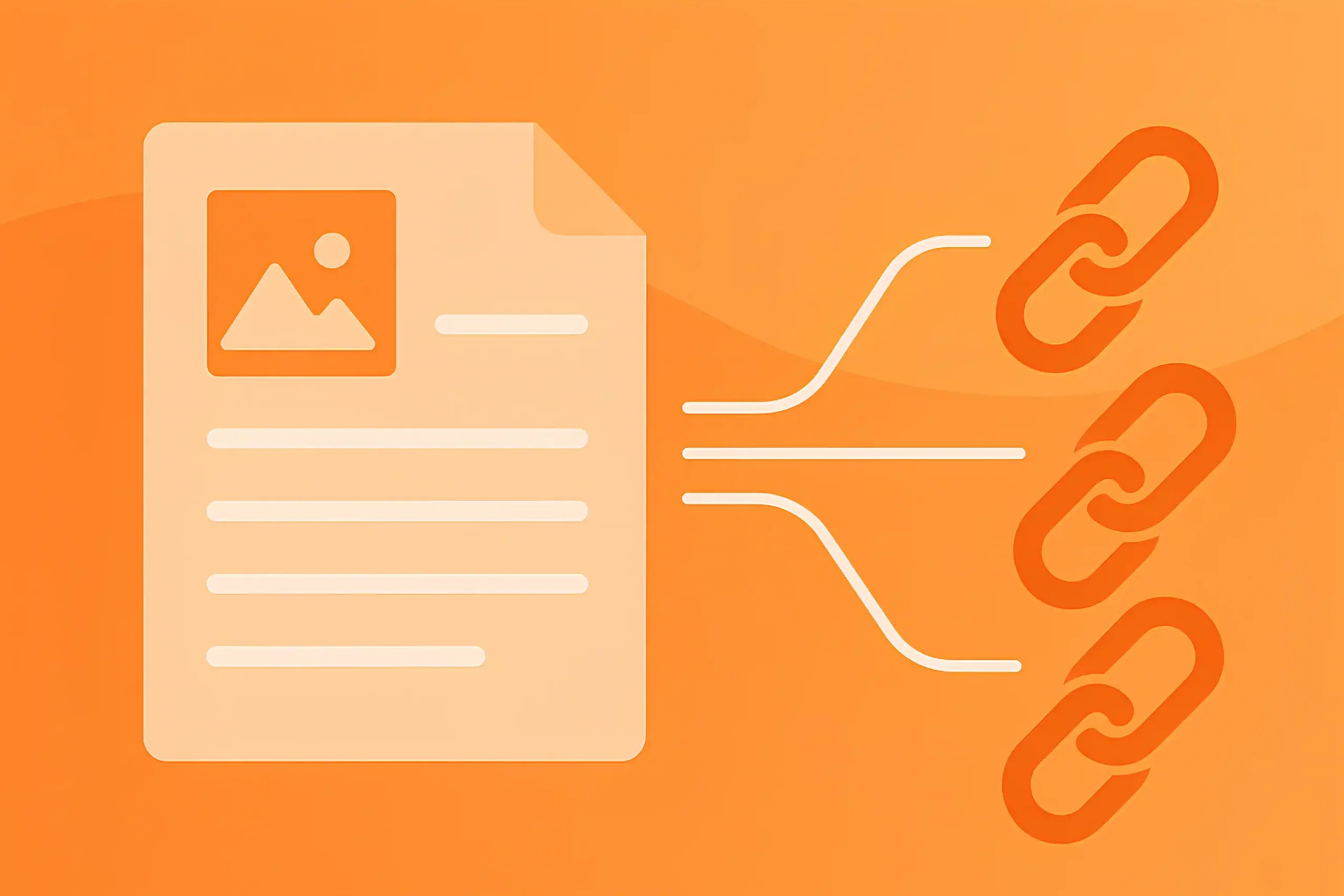
That’s why we need to talk about white hat link-building in an honest way. But before we dive in, let’s take a quick moment to compare white hat and black hat techniques at a glance, just so we’re clear on the line between smart strategy and risky tactics.
| Aspect | White Hat | Black Hat | Risk Level |
|---|---|---|---|
| Approach | Follows Google’s Webmaster Guidelines | Violates search engine guidelines | White Hat: Low Black Hat: High |
| Techniques | Guest posting, digital PR, content marketing, HARO | PBNs, link farms, automated link spam, paid links | White Hat: Sustainable Black Hat: Penalty-prone |
| Longevity | Long-term SEO value | Short-term ranking spikes | White Hat: Long-term Black Hat: Unstable |
| Reputation Impact | Builds trust, authority, and brand equity | Can harm brand reputation and credibility | White Hat: Positive Black Hat: Risky |
Over the years, I’ve had plenty of clients come to me saying, “We need 100 links this quarter” or “Can you get us 20 DR60+ backlinks this month?” And my first reaction is usually: To what?
If you don’t have the right content, targeting the right keywords, backed by proper site structure, UX, and technical setup, then link-building becomes a waste of time. It doesn’t matter if the links are white hat, black hat, or from another planet; they won’t have a positive impact if there’s no foundation.
This doesn’t mean I’m about to turn this into a full-on-page SEO tutorial. But before we talk about earning links, I need to make one thing clear: Google rewards websites that are built with purpose. If your house has no walls, don’t bother painting it.
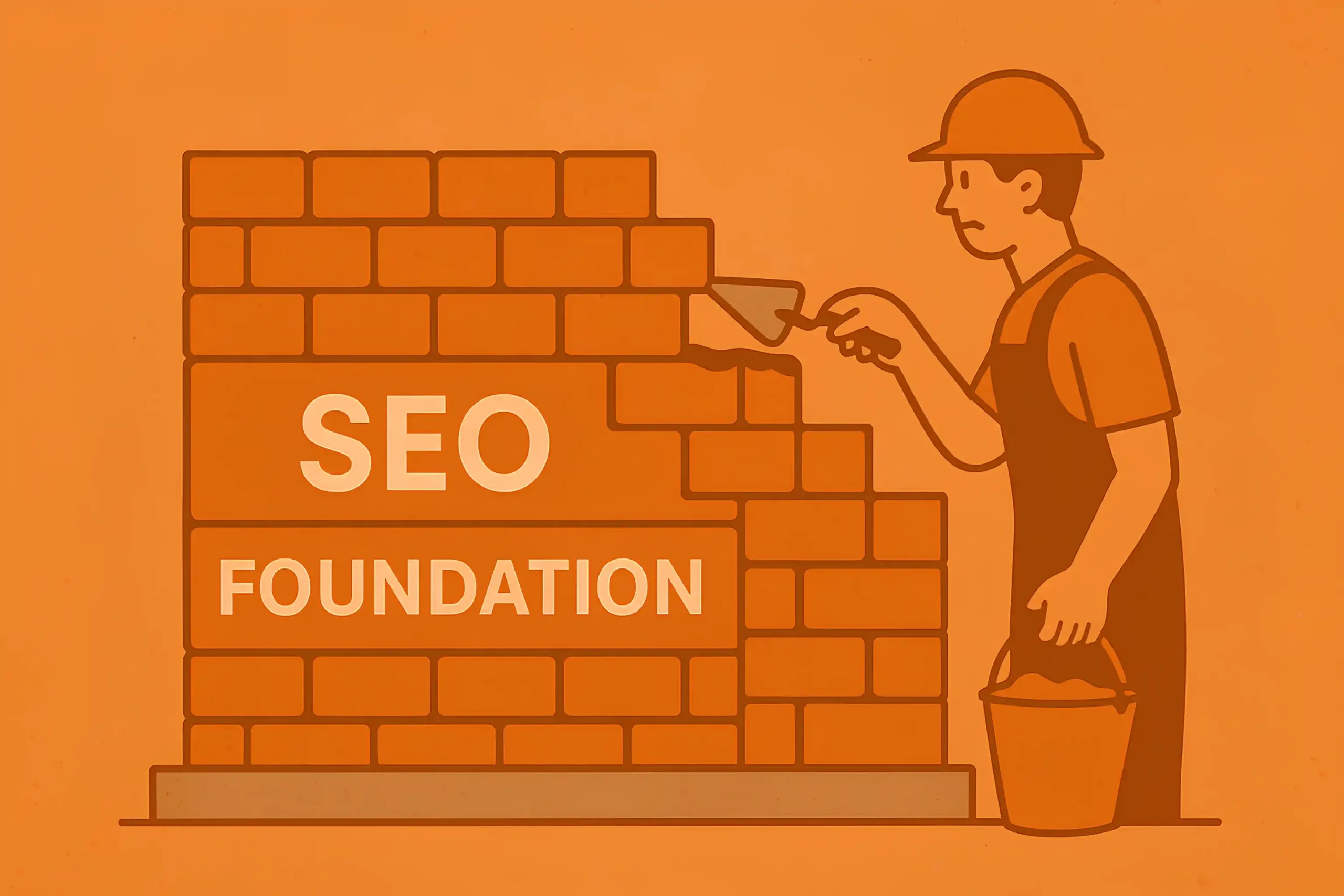
So, here’s what you need to have in place (globally): First, your content needs to target keywords that align with user intent. Second, your website’s structure should make sense for users and crawlers.That means clean navigation, internal linking that connects related content, and logical siloing.
Third, focus on technical SEO. Make sure your site is indexable; no broken pages, no redirect chains, no JavaScript-based content that Google can’t read.
In this section, I’m going to break down some of the most effective white hat link-building techniques I’ve used over the years, by category. I’ll also put together some comparisons to black hat techniques, so you understand what kind of results you can expect and where the risks are.
These are strategies I’ve tested across different industries, different SEO budgets, and different stages of website growth. Some are slow but strong. Others are faster, but require more effort or connections. Either way, you’ll walk away knowing what works, what’s realistic, and where to focus depending on your situation.
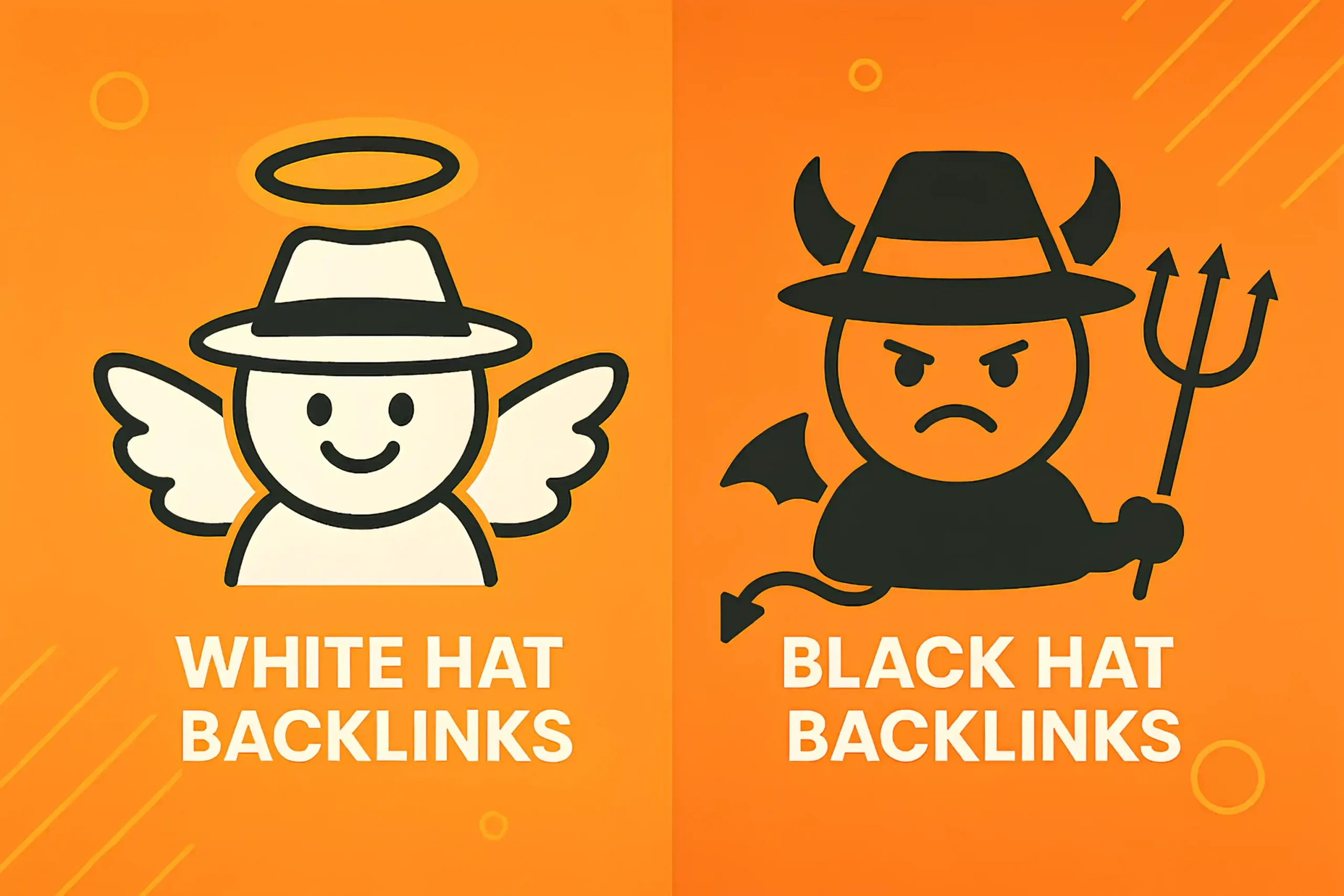
In most cases (especially in highly competitive sectors), SEO doesn’t work without backlinks. Same way, link building doesn’t work without content worth linking to.
You can try buying links, doing link exchanges, or sending out the same outreach email to 500 people, but if there’s nothing valuable on your site, all of that effort either gets ignored, flagged, or costs you a ridiculous amount of money for something with a short life.

Content-driven link building is still one of the most honest and scalable approaches out there. I mean real value: original data, actual insights, well-structured evergreen content, and expert input.
I’ve helped clients earn hundreds of backlinks just by building linkable assets. For example, in one of my link-building case studies, I thoroughly explain how one of our SaaS clients earned hundreds of links from top media publications through statistics content and how-to guides.
Another great angle is expert roundups and interviews. Bring together insights from 10 or 20 industry professionals on a topic like “The Future of AI SEO services” or “What SEO Experts Think About Google’s Latest Update.”
Don’t underestimate evergreen content. A good piece on “Webflow SEO Guide ” might not get links overnight, but over time, it becomes a go-to reference, especially if it’s clear, well-structured, and updated as trends change. Add visuals, examples, and keep it honest.
Now, let’s compare that to what a lot of black hat link builders do. They generate mass-produced AI content with generic advice, fake author bios, and statistics they stole from five other blogs. It ranks fast sometimes. It might even get a few links through PBNs or link farms. But it has no staying power. Google’s already getting better at filtering this out, and even if it “works” now, it’s not worth it.
Content-driven link building isn’t easy. It’s not fast, and yes, the expectations should be realistic. You won’t get 50 backlinks for every article. Sometimes you’ll get none. But if you consistently publish content with actual substance, designed with the user in mind, you’re building a durable foundation for real authority.
Relationship-based link building is one of the most underrated link-building strategies out there. I mean, building a good network of people in your industry. Founders, marketers, bloggers, writers; people who care about the same topics you do.
If you’re consistent and human about it, you’ll open doors that just aren’t possible through cold backlink outreach. You can find several link opportunities just by replying to someone’s tweet, joining a thread, or answering questions.
Niche communities are another great opportunity. If you’re active and helpful, people notice, and when they write something and need a source, they’ll remember you, or they’ll reply to your comment asking for your site.
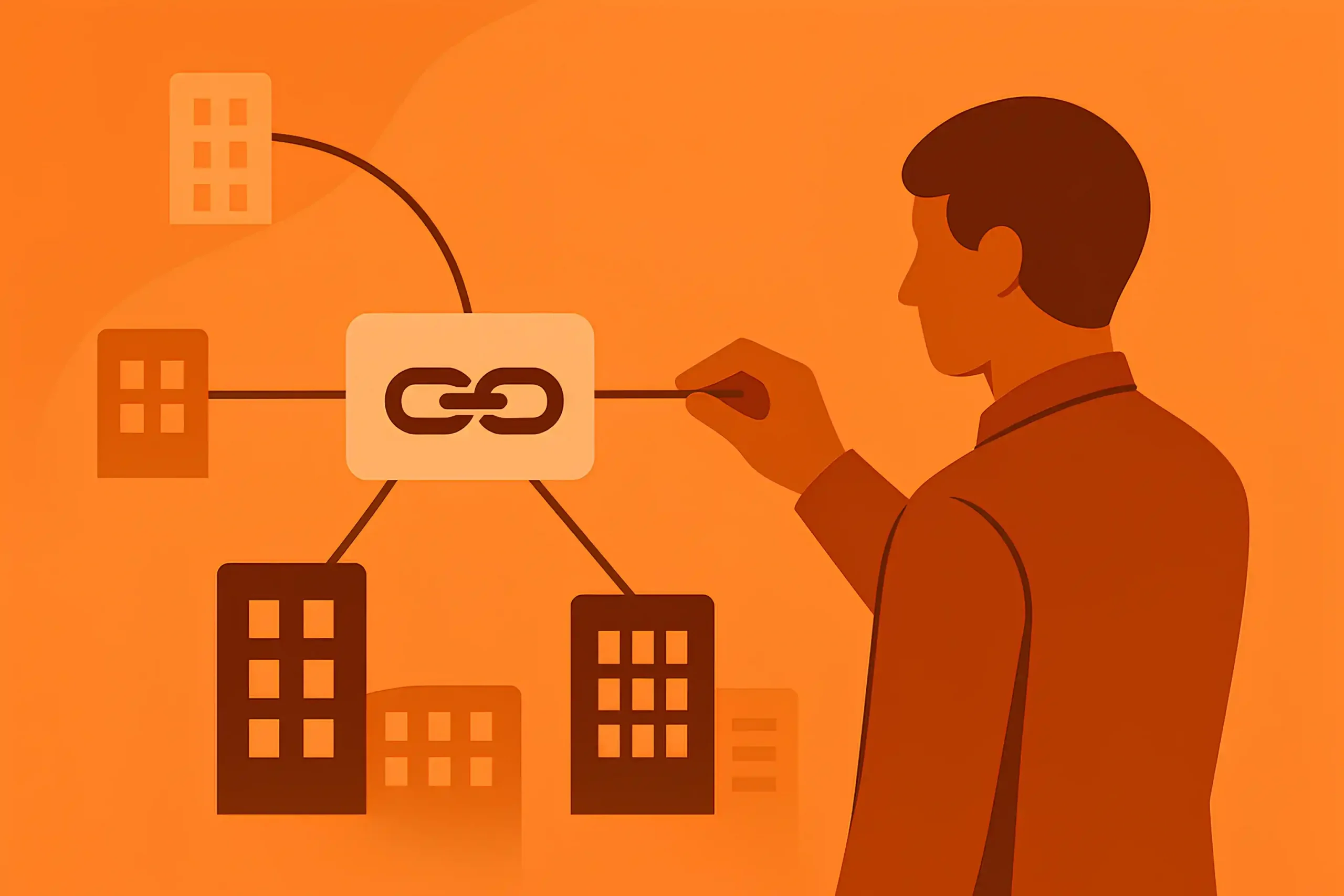
Avoid fake personas, automated social accounts, low-effort engagement, or “relationship building” that’s just a veiled way to drop your link in the third message.
The pros of relationship-based link building are clear. It’s real, it’s repeatable, and it builds your reputation, not just your backlink profile. The downside is that it takes time, and you can’t fully automate it.
Post your thoughts once or twice a week. Comment on other people’s posts in your niche. Not with “Nice post!” or some emoji, but with something that adds value.
You don’t need a huge following. You just need the right people to see you regularly.
On Twitter (or X, whatever we call it now), the same rule applies. Follow journalists, bloggers, SEOs, SaaS founders, whoever’s in your industry. Watch what they’re talking about. Jump into conversations when it makes sense. Share your wins, experiments, and even failures.
PR link building is one of the cleanest white hat strategies you can use, and Google knows it. These are links that come from earned media; you’re not paying to be featured. You’re contributing something valuable to a conversation that’s already happening, and you’re doing it in a way that builds credibility around your brand.
Digital PR is not the same as traditional PR. Traditional PR is focused on brand awareness, press releases, TV or radio appearances, and general exposure. In SEO, we don’t need a 10-second quote on the news; we need contextually relevant, high-authority backlinks.
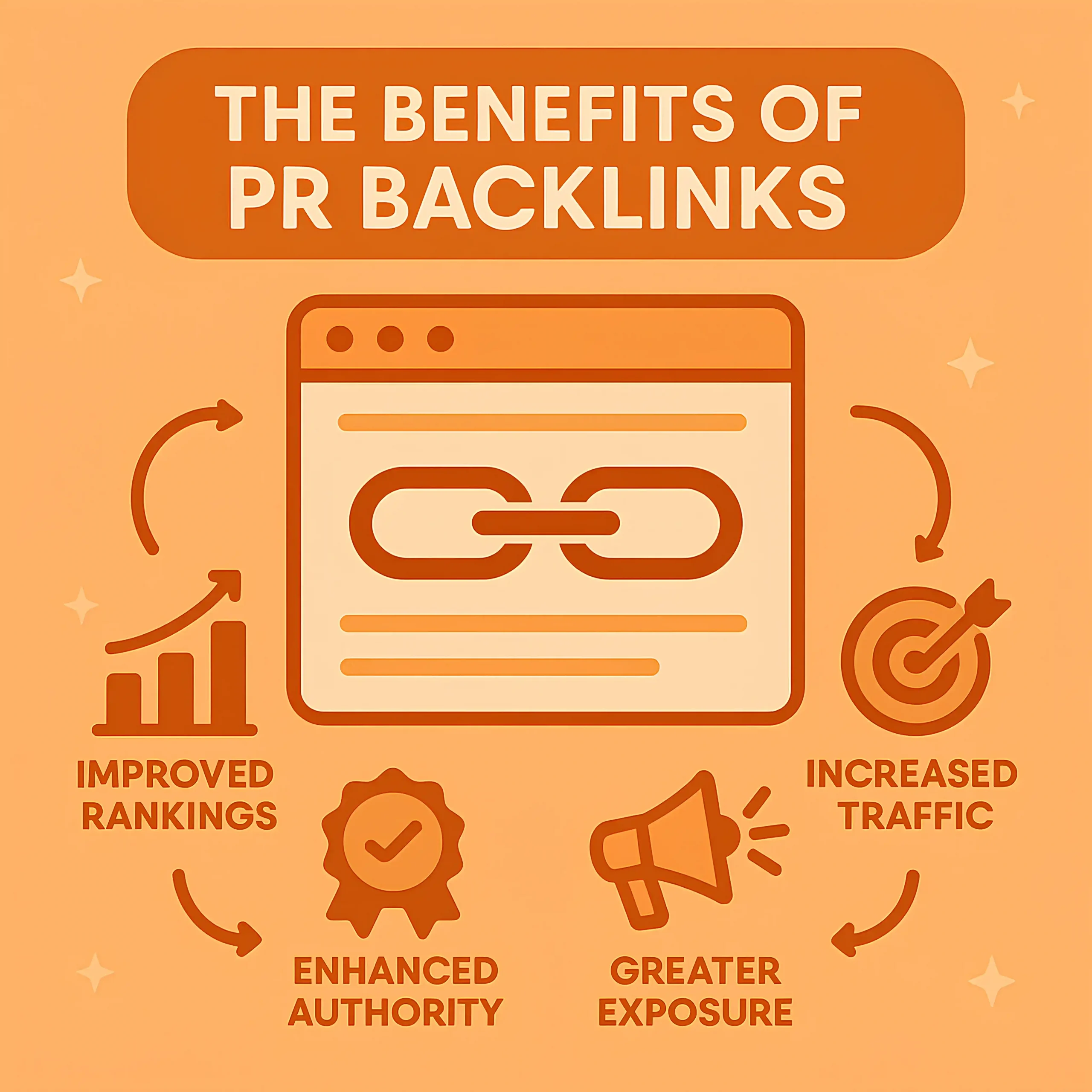
On the other hand, Digital PR focuses on online placements that drive SEO value. For instance, business magazines, tech blogs, niche publications, podcasts with show notes, data roundups, and opinion pieces.
One of the most proven ways to do this right is through data-backed campaigns. Journalists love numbers. If you can package up a set of original data, trends, comparisons, or even well-curated public stats with a new angle, you have a lot of chances.
You can also consider HARO link-building, especially if you love manual link-building and don’t want to fake authority. Journalists submit real requests for expert quotes, and if you respond with something useful, you get featured.
I’ve personally secured links from SaaS blogs, business news outlets, and top-tier publications, all by giving 5-minute answers to HARO queries. The links are often high DR, and you’re earning them without writing guest posts or pitching editors all day.
Ask five different link-building specialists what guest posting means, and you’ll get five different answers. Some think it’s just publishing 800 words of an AI-written guest post on a blog that sells links all day long, with 30 outbound links per post, asking for $50 to insert your anchor in a two-paragraph “marketing tips” article. Yeah, they’re doing it for anyone who pays.
But, of course, now I’m talking about blogs, magazines, or community publications that have strict standards, editorial review, and don’t accept just anyone.
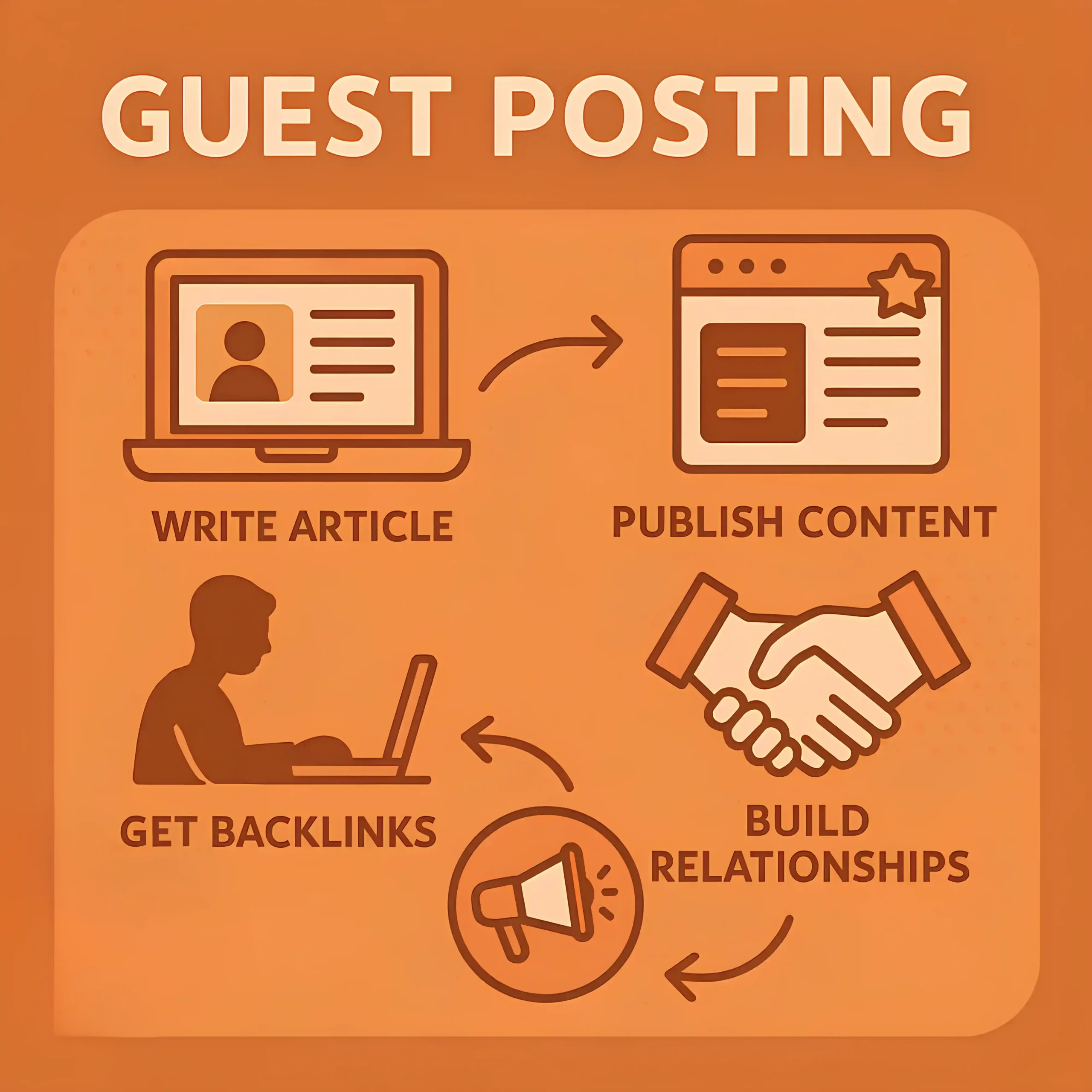
You have to know what they care about, pitch an idea that fits their voice, and then write something that helps their audience. A guest post on a respected niche site with a strong readership is worth more than ten generic backlinks from free guest posting sites like Medium.com, for example.
If you’re running a local link-building campaign, becoming a contributor to a local business journal, a news site, or even a university blog can be incredibly effective. Most of these outlets aren’t bombarded with guest post pitches the way national sites are.
The black hat version of this is faking authorship, spamming editors, buying access to someone else’s column, or inserting backlinks through hacked contributor accounts.
Earlier, I discussed how great content, especially original and data-rich pieces, can naturally earn links. However, when discussing passive link acquisition, we need to broaden the definition of what “linkable” means.
Some of the most effective passive link magnets are also tools, templates, calculators, charts, visuals, and even something as simple as a well-made comparison table can attract links over time, without you actively asking for them.
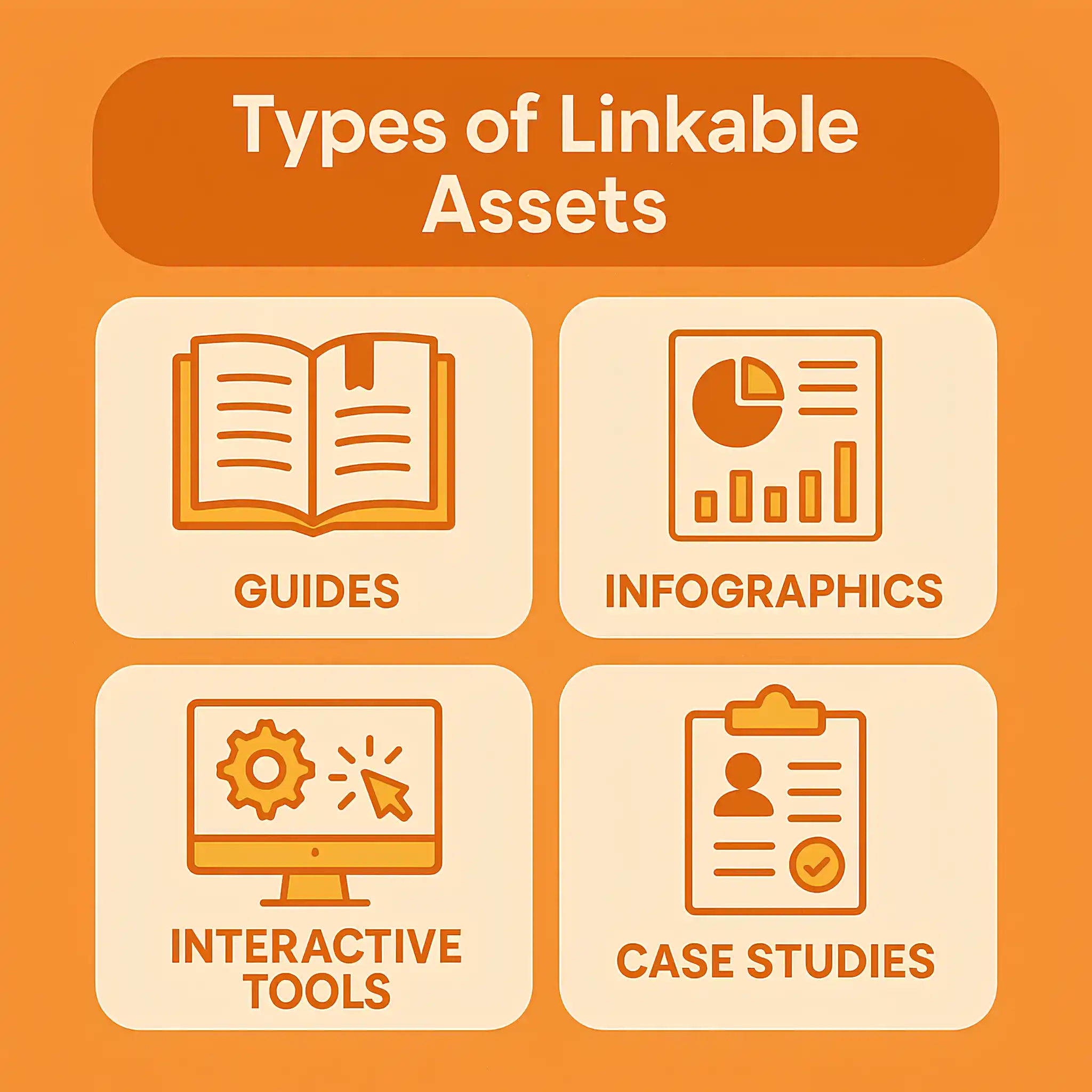
For example, an “Enterprise SEO ROI calculator” doesn’t just help your own visitors. It’s something other marketers, agencies, or even journalists might embed or link to when they’re talking about budgeting or digital planning.
The beauty of passive link acquisition is scale. You build once, then over time, the asset works for you, even while you sleep.
Go to Ahrefs, find your top 5 competitors, and analyze your competitors’ backlink profiles to find out what types of pages are getting the most backlinks, but exclude their homepage or product pages. Focus on top-linked internal pages. If three of them are tools, there’s your signal.
One tip: make sure your asset lives on a dedicated, indexable page with SEO in mind. Add supporting content, a short explanation, maybe even internal links. If people are linking, you want to make sure the page ranks and converts visitors.
Good links cost time, effort, or money, but if you’re working with a limited link-building budget, that doesn’t mean you’re out of options. Some of the most ethical and effective white hat link-building techniques don’t require big budgets. They just need consistency, creativity, and a bit of research.
One of the oldest, and still one of the cleanest approaches, is broken link building. According to link-building statistics, 31% of large enterprise companies have unmaintained pages, leading to significant 404 link opportunities for SEOs.
It just takes time to find the right pages, and most people won’t respond unless your replacement content is useful and well-matched.
Next, you’ve probably seen pages like “Best Free SEO Tools” or “Marketing Resources for Small Businesses.” The goal here is simple: find relevant pages like that and ask to be included if your resource adds value. Expect a low reply rate. That’s normal. But when you get added, that link is earned, and often stays live for years.

Finally, if you’re running enterprise SEO, you’re likely sitting on a different kind of opportunity: unlinked brand mentions.
It’s when your brand gets mentioned across blogs, articles, or industry discussions, but there’s no clickable link pointing to your site. If your name’s out there but not linked, you can reach out and politely ask them to turn the mention into a clickable credit.
Regardless of the industry, the main concepts of link-building are the same. However, based on the sector and business model, of course, there are some considerations. For example, in SaaS link-building, one of the most common strategies I see is the 3-way link exchange.
It’s technically still a form of link trading, but it’s often considered safer if you’re careful. What I mean is that you still need to be cautious. Too much of this, or doing it with low-quality sites, and it starts looking manipulative.
In B2B SEO, especially in very specific or technical industries, earning links through “linkable assets” isn’t always realistic. In this case, I think you should invest your efforts in guest posting and niche edits techniques. If you wanna learn more about B2B link-building, check out my guide.
If you’re working in the healthcare sector, you should know that there are rare white hat healthcare link-building opportunities that work. You can’t pitch the same way. Most blogs don’t accept random health content, and many are strict about who they link to for legal and trust reasons. In this case, I usually recommend putting real effort into digital PR.
If you have doctors on your team, highlight their expertise. If you have original research or healthcare trends, pitch them to relevant media.
Hiring a link-building agency isn’t easy. There are thousands of them, all promising the same things: “high-quality backlinks,” “safe SEO,” “DR 70+ links.” However, if you’re not in the SEO industry and don’t have at least some background knowledge, it’s hard to know who’s doing white hat work and who’s just building links with automated tools or using low-quality tactics.

First, ask how they prospect and qualify sites. What metrics do they look at beyond DA or DR.? Do they manually review the sites or rely on some bulk outreach?
Next, see if they can provide you with examples of individual links, not just totals. Ask for 3–5 links they’ve built in the past, along with the source URL, the anchor text, the target page, and maybe even the keyword if they’re open to sharing.
Then, try to understand their overall process. Can they explain how outreach works? What tools do they use? How much of the process is automated and what’s done manually?
Also, ask how they avoid PBNs, spam networks, and mass-insert sites. If they say something unclear like “we vet every site carefully,” ask how they vet. Real SEO agencies can tell the difference between a clean, contextually relevant blog and paid-to-play content.
It’s also worth asking for past case studies, especially ones where links clearly played a role in the client’s growth. Sure, you can read reviews or testimonials, and they help. Don’t rush. Ask direct questions. You’ll learn quickly if the agency is just selling link packages or if they know what they’re doing.
Black hat link-building is when someone tries to cheat the system to rank higher on Google. Instead of earning links by creating something valuable, they use shortcuts that go against Google’s rules.
For example, some people pay money to get links placed on random websites that don’t care about quality. Others build fake websites just to link to their main site. Some even use software to post spammy links all over the internet or try to place links into other websites without permission.
Yes, white hat link-building usually takes more time, because you’re doing things the right way. However, that doesn’t happen overnight. You might publish something great, but it could take weeks or even months before people start linking to it. Sometimes you’ll have to do outreach, follow up, or get involved in your niche community to make it happen.
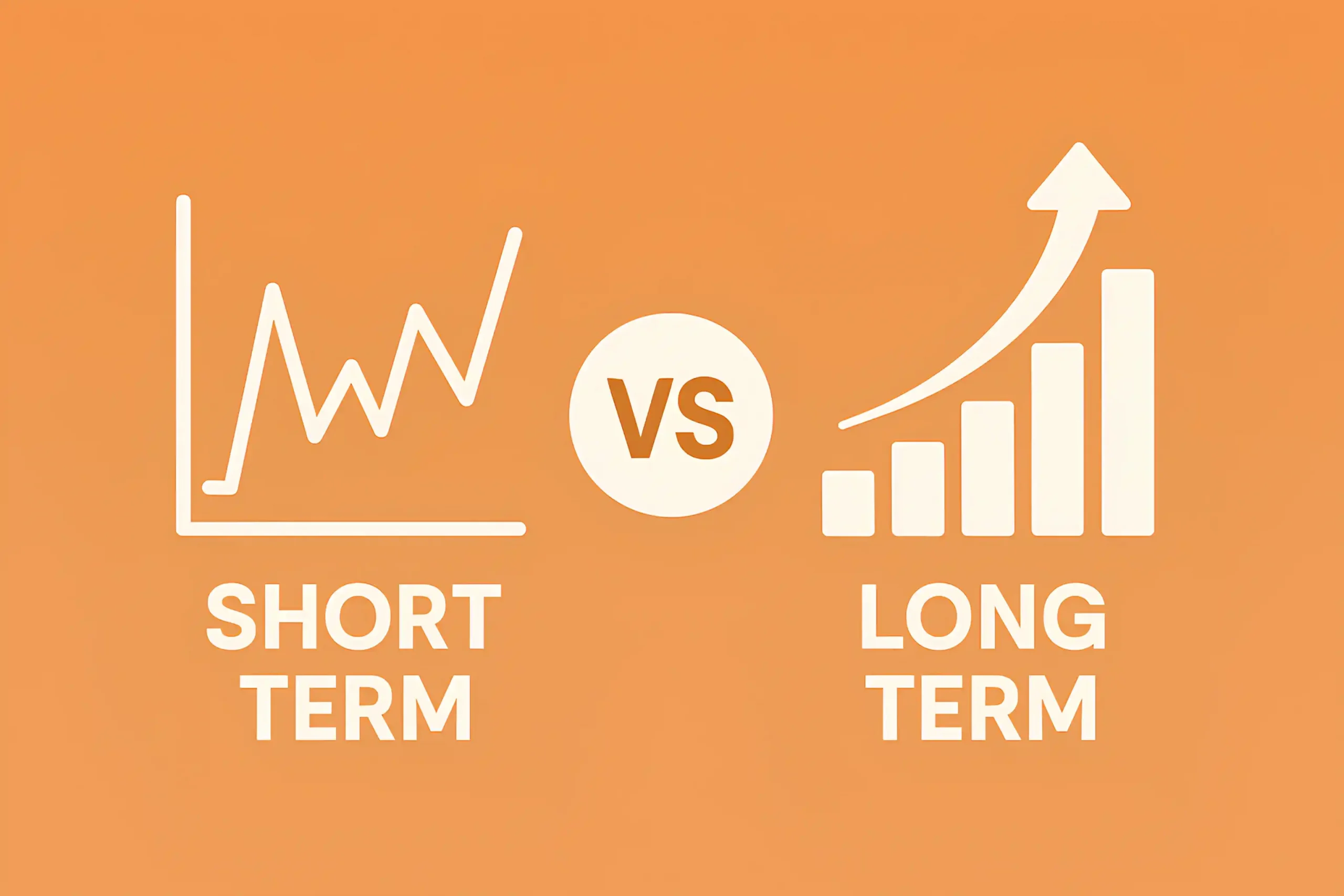
It’s slower, no doubt. But it’s also safer. If you’re looking for fast results with zero effort, white hat isn’t for you. But if you care about building long-term traffic, trust, and authority, then yes, it’s worth the wait.
In most cases, no; you don’t need to disavow low-quality links just because they’re not from top-tier sites, especially if they were earned naturally.
If the links came from good websites (even with low DA scores), through honest outreach, niche edits, or mentions, and you didn’t pay for them or manipulate anchor text, there’s usually no reason to worry.
Google’s pretty good at ignoring weak links that don’t carry much value. It doesn’t penalize you for a site linking to you unless it sees a clear pattern of spam or manipulation.
I think there’s no one “best” white hat link-building technique that works for everyone. It depends on your industry, how many links you need, your content, and where your website stands today. I’ve tried and tested a lot of strategies over the years, and I would classify them in the following sequence based on what tends to work best today:
Not usually. White hat links don’t give you fast wins. They give you solid wins. I mean, if you’re patient and consistent, the links you earn this way tend to carry more weight, and they last longer. They’re safer, more trusted, and help your site grow steadily without worrying about penalties or sudden drops.
So no, white hat links aren’t the fastest, but they’re the most reliable way to improve rankings
Technically, yes, but it’s not common if you’re truly playing by the rules. Sometimes, even clean tactics can trigger a penalty if they’re misunderstood by Google’s algorithm. For example, if you’re earning a lot of links too quickly, even through outreach, it might look unnatural (especially if your site is new).
But in most cases, if you’re earning links through useful content, real outreach, or press coverage, you’re on strong ground.
First of all, you need to find out why you were penalized. Whatever the reason is, that’s what you need to fix first.
Once you’ve removed the issue, whether that means disavowing bad links, rewriting content, or cleaning up your site, then yes, white hat links can absolutely help you recover.